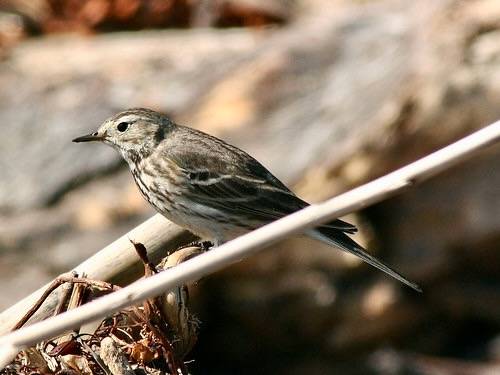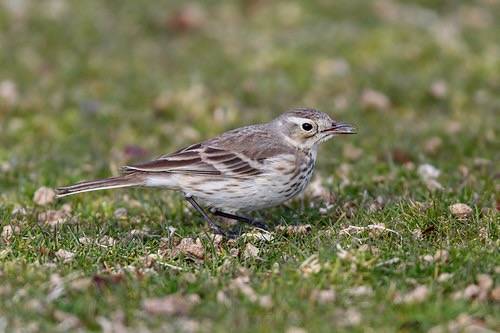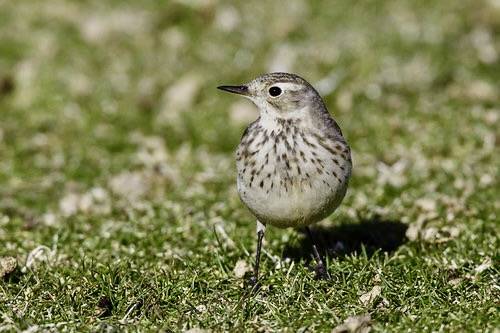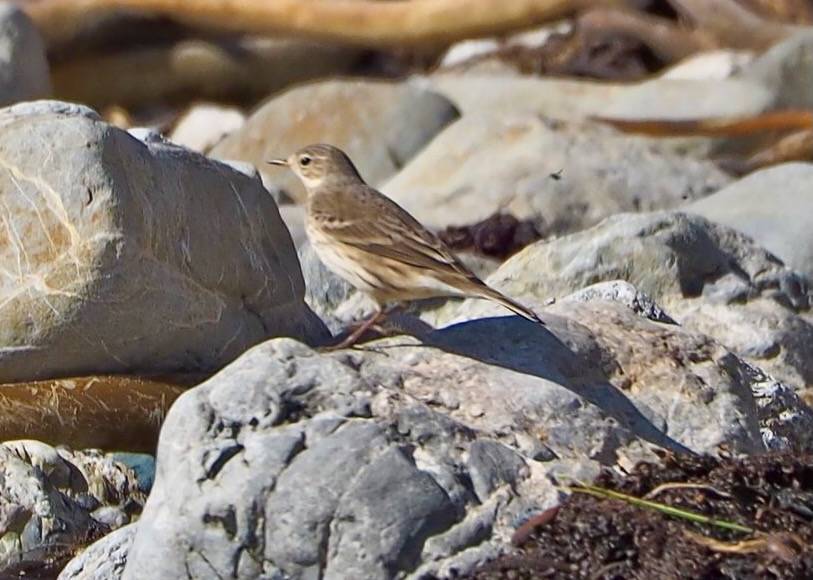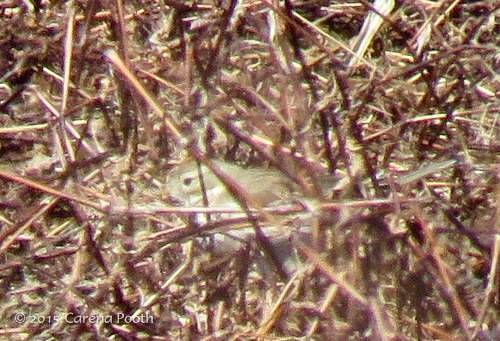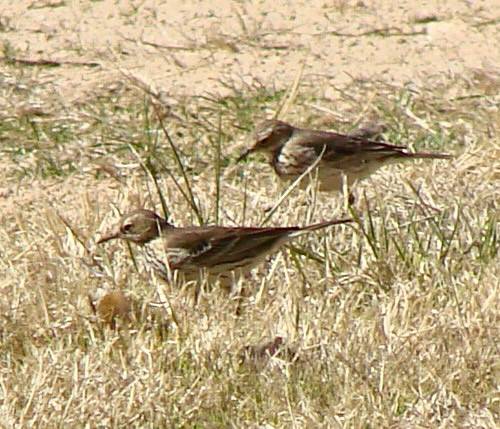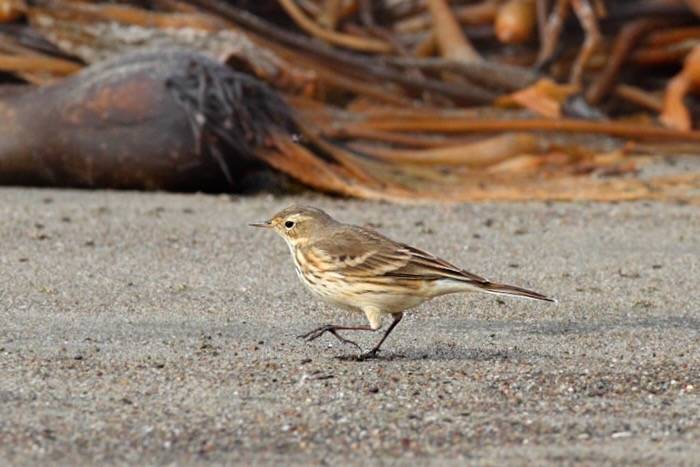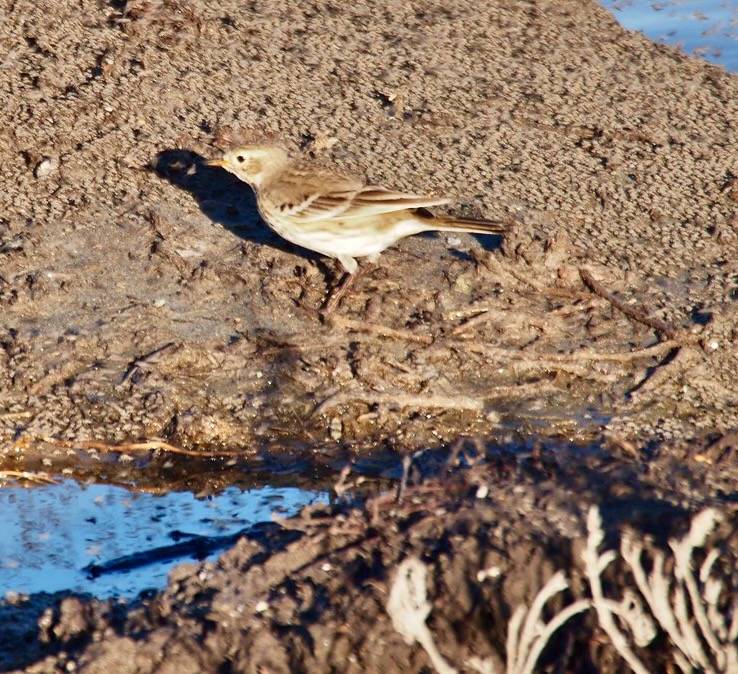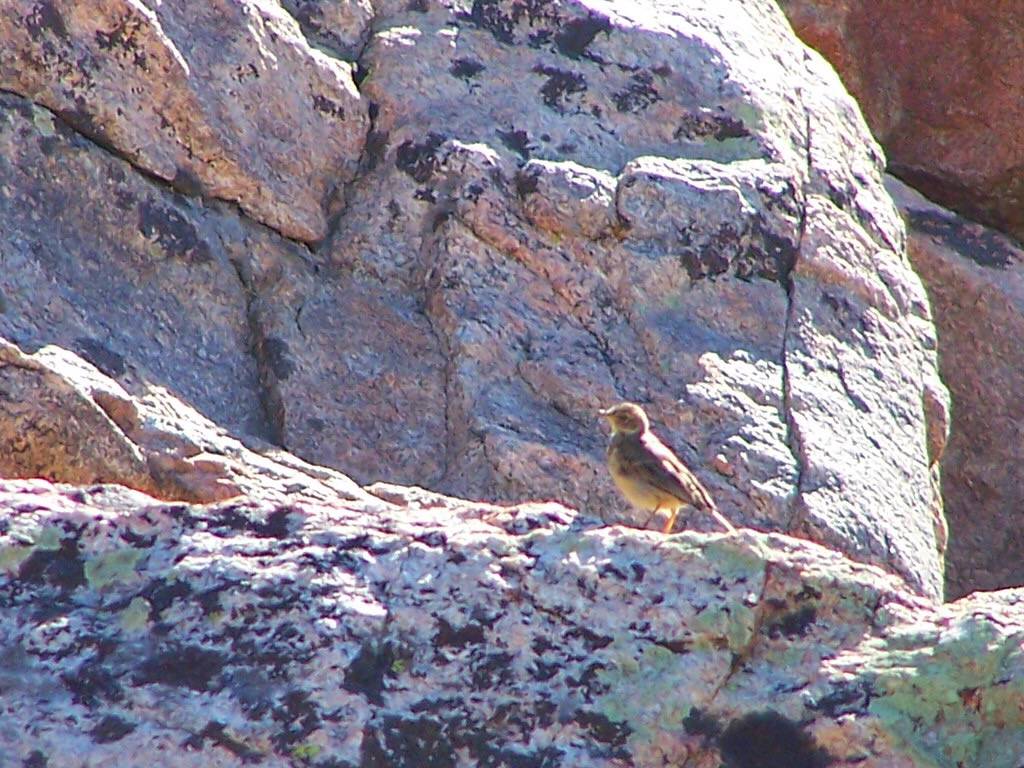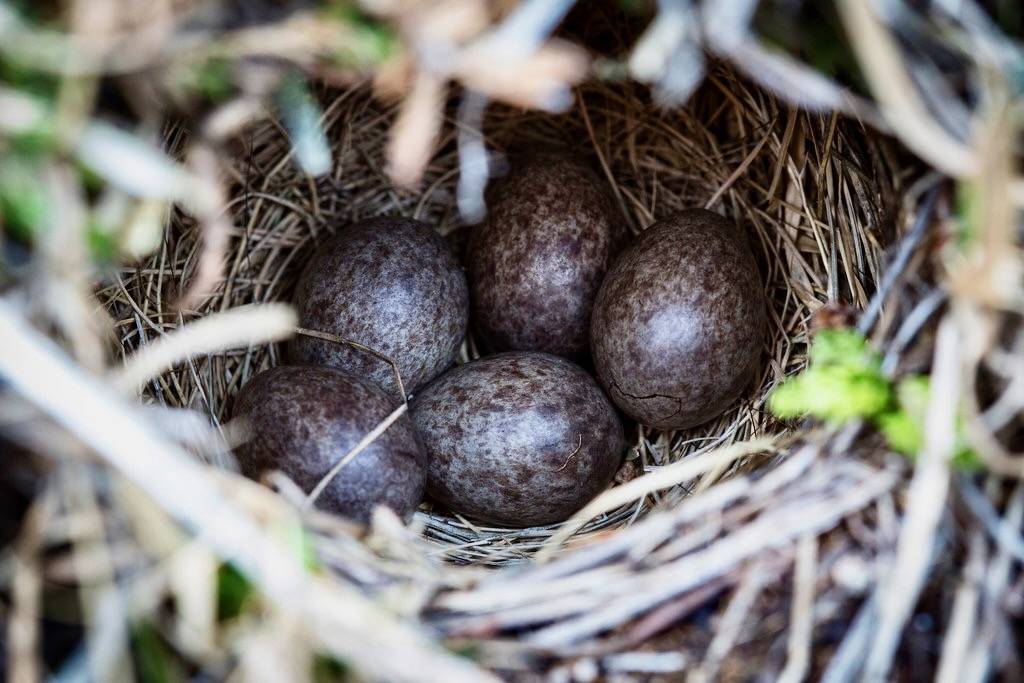American Pipit
The American Pipit is only observed in migration and during the winter months in Rhode Island. At Salter Grove, individuals were observed once in December walking briskly between rocks and probably foraging for marine worms and small crustaceans in the mudflats exposed by low tide on Marsh Island.
About the size of a sparrow, the American Pipit has a thin dark beak and a somewhat longer tail that may wag at times as it walks across the ground. Despite its energetic, chicken-like gait, it is not easily seen as it looks for insects and their larvae in stubbles of vegetation. It has a dingy plumage that is grayish-brown above and buff beneath with a variable amount of streaks. It is distinguished by a particularly long hind toe thought to help maintain balance as it forages in marshy and muddy habitats or rocky coastal terrain.
In North America, the American Pipit breeds in the Arctic tundra of the far north, or in high-elevation alpine meadows of temperate localities. However, despite its name, it is a Holarctic species and is not restricted to North America. It also occurs in similar habitats in Eurasia where it is known as the Buff-bellied Pipit.
The cold tolerance of this small bird is impressive. Adults arrive at breeding grounds just as snow begins to melt to build nests in newly exposed ground. Nestlings buried by a spring snowstorm in Wyoming were found alive after 24 hours!

